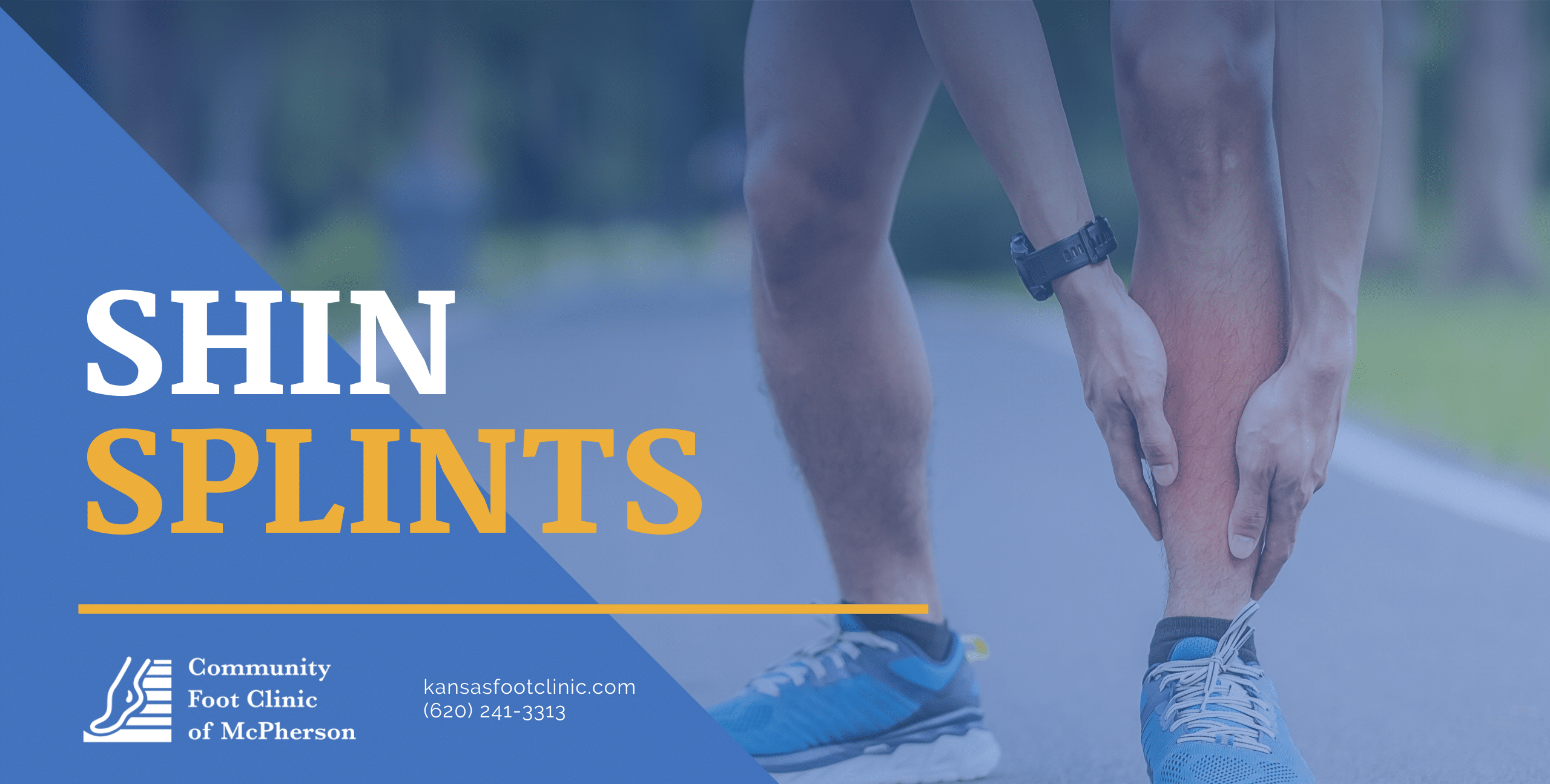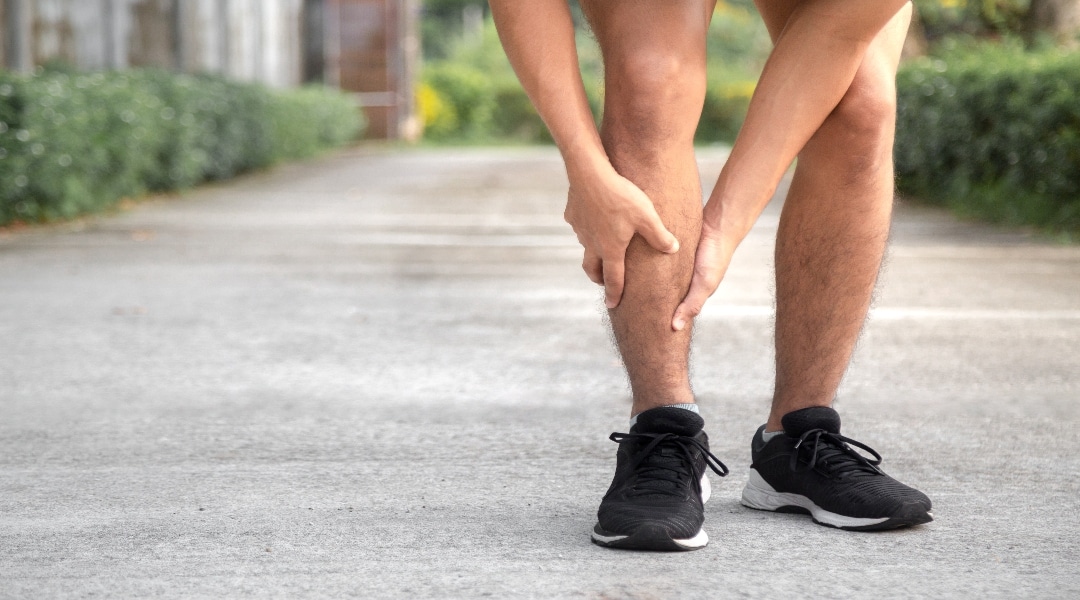Shin Splints
Do your shins always start throbbing in pain whenever you go for a jog, spend a little time on your feet, or even go up and down the stairs?
Maybe the pain only comes around when you’re exercising—or perhaps it’s gotten to the point where you feel it at rest, too.
Chances are you’ve developed a condition called shin splints. And while you might not automatically think of your shins as part of the “feet and ankles,” you might be surprised to learn that your podiatrist is usually a great choice for care. Our office can provide direct treatment options, as well as any advice and guidance you need to manage your care at home.

What Are Shin Splints?
The term “shin splints” (also known as medial tibial stress syndrome) refers to pain and inflammation in any of the tissues surrounding the bones of the lower leg, particularly the shinbone (tibia.) This can include the bone itself, as well as any of the soft tissue structures (ligaments, tendons, etc.) that connect to it.
The most common symptoms include pain, tenderness, soreness, and swelling that tends to be concentrated along the inner side of the shin. Pain can manifest as anything from a dull throbbing sensation to sharp, stabbing pain.
As mentioned above, pain usually tends to increase during activity and recede with rest. If your shin splints become severe, however, the pain might stick around all the time.
How Did I Get Shin Splints?
Shin splints are an overuse injury, meaning that the bones and tissues of the shins sustain enough repetitive force over a period of time to become damaged. Eventually this can lead to stress fractures in the shinbone itself.
It’s not always possible to identify an exact cause of shin splints, but there are several common risk factors that are frequently involved. One or more may apply to your situation:
- Sudden changes or increases in activity levels and intensity. Individuals who start a new exercise program, or rapidly ramp up the intensity of their workouts, are highly susceptible to shin splints. This could be measured in time, distance, frequency, or even difficulty (such as running on inclines or concrete, as opposed to flatter and softer terrain.)
- Physically demanding occupations or hobbies. Runners, military personnel, physical laborers, and people who love high-impact sports are vulnerable, especially at the start of a season or training program.
- Improper shoe gear. Wearing worn out, unsupportive shoes during physical activity can start a chain reaction of stress and strain throughout the musculoskeletal system. Forces that aren’t being absorbed by quality shoes get transferred up the kinetic chain, potentially irritating or aggravating your shins.
- Structural problems with your feet. People with foot abnormalities (such as flat feet) or certain inefficiencies with their gait mechanics can end up putting excess weight and pressure on the shins and lower legs.
What Should I Do About My Shin Splints?
In order to ensure your shin splints remain as mild as possible and you recover quickly and fully, we strongly recommend that you call us as soon as you start to notice symptoms.
The good news is that shin splints rarely require surgery and can often be treated primarily at home. The bad news is that a severe case of shin splints can sometimes take several weeks or even months to fully recover from, and require a lot of downtime.
The key, then, is to not let your pain become severe in the first place! The earlier you take action to counteract your shin pain, the greater your chances of a quick, relatively simple recovery.
Shin Splint Treatment Options
Before you even come see us for an appointment, you can begin RICE (rest, ice, compression, elevation) therapy at home. Discontinue strenuous exercise, and manage the pain through the use of ice packs, compression wraps, and by propping your feet up when you sit or sleep.
If your shin splints are mild, this may be all the treatment you really need. Once the pain is gone, you can gradually and carefully restart your activities, working your way slowly back to higher levels of intensity.
In other cases, we may recommend additional measures to accelerate the healing process and reduce the risk of setbacks or future injuries. These may include:
- Footwear recommendations.
- Orthotic devices to realign your foot and ankle mechanics to protect the shins.
- Laser therapy to accelerate the healing of damaged tissues.
- Physical therapy exercise to strengthen the bones and tissues of the shin, which will make them more resistant to damage.

Don’t Underestimate Shin Splints!
Many people are tempted to “shrug off” chronic pain and overuse injuries like shin splints, especially if they are still able to get through their days (albeit with pain.) They might feel that the problem isn’t yet serious enough for treatment, or are worried that the treatment will be worse than the injury.
This is almost always the wrong approach! Even mild cases of shin splints can develop into major problems requiring months of treatment and recovery if you don’t get the care you need early in the process.
If you are currently dealing with shin pain that just won’t go away, give Dr. Timson a call today. He can help!
McPherson Office
316 W. 4th Street
McPherson, KS 67460
P: (620) 241-3313
F: (620) 241-6967
© Community Foot Clinic of McPherson. All Rights Reserved.
Privacy Policy | Terms & Conditions
Web Design by CP Solutions
Marketed by VMD Services
